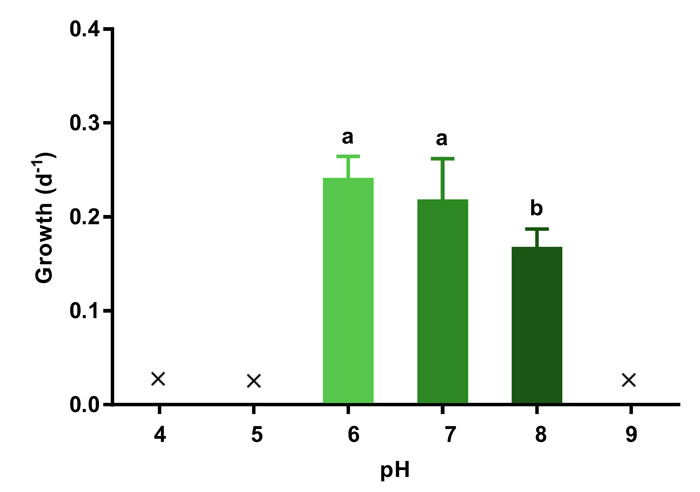| Tweet | Follow @co2science |
Paper Reviewed
Xu, K., Chen, H., Wang, W. Xu, Y., Ji, D., Chen. C. and Xie, C. 2017. Responses of photosynthesis and CO2 concentrating mechanisms of marine crop Pyropia haitanensis thalli to large pH variations at different time scales. Algal Research 28: 200-210.
Pyropia haitanensis is an economically important red algae species that is endemic to southern China, which region accounts for around two-thirds of the total Pyropia harvest in the country. Given this significance, it is important to understand how this marine macroalgae will respond to future changes in seawater pH that are predicted to occur due to so-called ocean acidification.
However, rather than study the growth response of P. haitanensis to the typical pH decline of 0.3 to 0.4 pH unit that is predicted by the end of the century, Xu et al. (2017) took a different approach, investigating the response of this species over six pH values (4.0, 5.0, 6.0, 7.0, 8.0) corresponding to a seawater pCO2 range of 50 to 58,433 µatm.
To accomplish their objective, the researchers grew thalli of P. haitanensis in natural seawater in a controlled laboratory setting at the six pH values over a period of 7 days. The results indicated that P. haitanensis grew best at a pH value of 6.0, achieving growth rates approximately 30% greater than those observed at the normal, ambient seawater pH of 8.0 (see Figure 1 below). In contrast, when the macroalgae was exposed to pH treatments of 4.0, 5.0 and 9.0, the thalli died. Consequently, the authors conclude that P. haitanensis thalli can "maintain intracellular pH homeostasis at pH 6 and 7 to support rapid growth rates," relative to ambient conditions.
And that finding is extremely good news, revealing that the minimal pH decline of up to 0.3 pH unit between now and the end of the century will actually benefit the growth of this macroalgae and that those benefits continue to increase out to a pH value of 6.0, which corresponds to an atmospheric CO2 value of around 33,000 ppm!

Figure 1. Growth rates of P. haitanensis thalli during 7 days incubation at 6 different pH levels. The "x" indicates the algae died after 7 days of pH treatments. Data are means ± SD (n =7); bars with different letters represent significant differences between pH treatments. Source: Xu et al. (2017).




